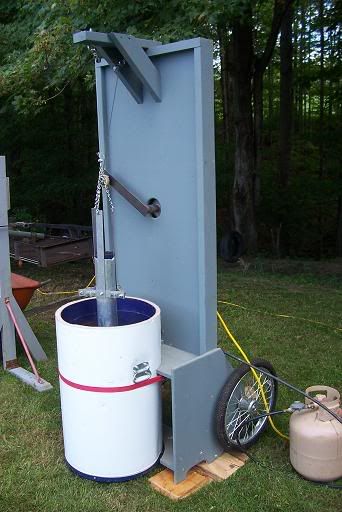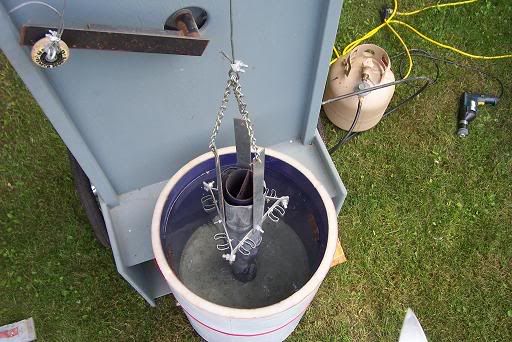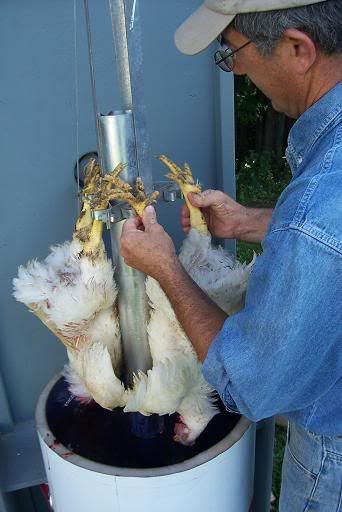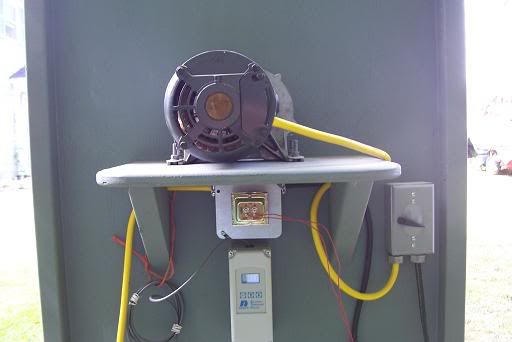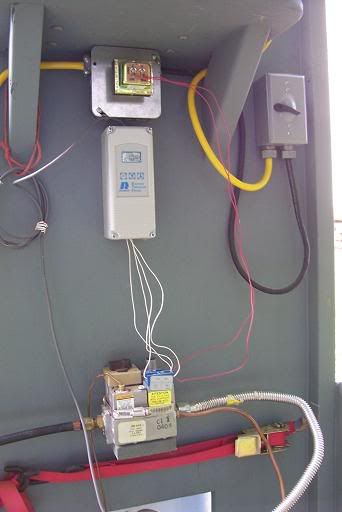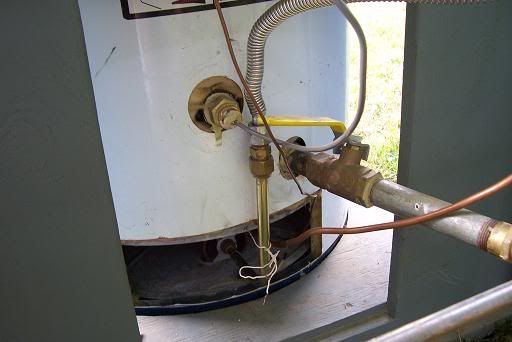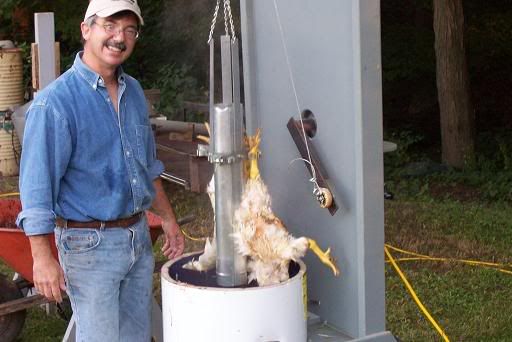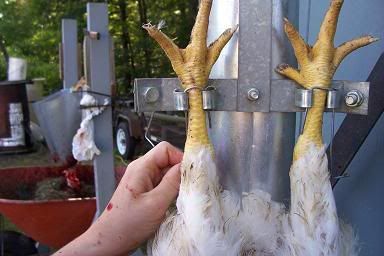Dateline: 26 September 2006
The primary plucker component I make and sell is called a featherplate. The featherplate is a round disc positioned at the bottom of the plucker. It is studded with lots of rubber plucker fingers and spins around. When a scalded bird is dropped into the plucker it tumbles around and the fingers flail the feathers off. It’s really quite amazing.
My plucker planbook tells you exactly how to make a featherplate. People have made plates out of plywood, solid oak boards glued together, and even recycled aluminum stop signs. The featherplates I make and sell are made out of very durable 3/4” thick High Density Polyethylene (HDPE).
The following picture is of one of my key employees. His name is James. He is my 11-year-old son. I buy 10 sheets of plastic at a time and have it shipped to New Hope Mills in Auburn, N.Y. I do that because the Whizbang plucker parts manufacturing facility does not have a dock where tractor trailer trucks can make deliveries.
James and I load the heavy sheets of plastic onto my little trailer and bring them to our manufacturing facility, which happens to be located next to our house on our little homestead out in the countryside here in the beautiful Finger Lakes region of upstate New York. Ten sheets of HDPE will make 80 featherplates.
When we get the plastic home, we cut it into 2-foot by 2-foot squares with a saw and stack them in the factory. Each plate then goes through a carefull 11-step manufacturing process before it is done. My other key employee is my 15-year-old son, Robert. Last summer I walked into our factory and took the following picture of a very diligent Robert drilling finger holes in one of many featherplates.
As you can see the Whizbang manufacturing facility is just a small and very crowded workshop. But it is still a serious shop—-my sons and I produce carefully-crafted featherplates. Here’s another view of the shop and Robert. Notice that he is sitting on a plastic lunch box which is on top of a stool. We’re great improvisers around here.
After a featherplate is machine-rounded (to 20-3/4”) and drilled, I precisely position and mount a sturdy 1” diameter flanged drive shaft directly in the center of the plate. And I also mount a reinforcing plate on the bottom of the featherplate. The HDPE is stiff and tough and probably doesn’t need a support plate but I tend to overbuild. It makes me feel like I’m giving people a better product, and I am. This next picture shows a completed featherplate with attached shaft.
The plucker fingers I recommend in my book are designed to grip a thinner plate so, as you can see, each finger hole is countersunk on the bottom of the plate. This next picture shows a top view of the finished plate.
I also sell a 16” pulley, which attaches to the bottom of the driveshaft. The pulleys I sell are flywheel-heavy and they're ideal for the "driven" pulley on the bottom of the Whizbang Plucker.
An idler arm is needed to put pressure on the drive belt that runs the plucker. I tell how to make and install the arm in my book, and I sell an idler arm hardware kit as shown in the next photo.
Those four items—the featherplate, the flanged shaft, the 15” pulley, and the idler arm hardware kit are the harder-to-find plucker parts I sell. But I guess they aren’t really all that hard to find because they are available from me! ;-)
When someone purchases any of my plucker parts, I also send along some unique free things, as shown in this next photo...
The Euro-style oval sticker on the top clearly identifies you as a member of the Fraternal Order of Whizbang Pluckerbuilders, otherwise known by the acronym, FOWP. Whizbang pluckerbuilders are an exclusive group of very special people and I felt that we needed to identify ourselves as such. So I display a FOWP sticker on my vehicle and I look forward to the day when I see another vehicle with a FOWP sticker. It hasn’t happened yet, but when it does, I’ll know I’ve found a friend.
The yellow safety sticker in the middle of the picture will fit nicely on the 2x4 rails of your plucker. These stickers are available to anyone at the very reasonable price of $2.00 for one or $3.00 for two (postage paid). I encourage everyone with a Whizbang-inspired plucker to get these labels (even if you didn’t get parts from me) and put them on your unit, especially if you loan it out to others.
The nifty green and white bumper sticker says “Ask Me About My Whizbang Chicken Plucker.” It’s a real attention getter and conversation starter. And it’ll look right fine on the bumper of your town car.
All the stickers are made of the finest UV and weather resistant vinyl.
If you’ve read the Whizbang Plucker planbook, all of what I’ve told you will make more sense than if you haven’t. In any event, I hope you’ve enjoyed learning about my little home business. Someday, somehow, I’d like to expand this little example of a fledgling home economy. I love to have my kids work with me and I’m including them in the business as their maturity and skills allow.
UPDATE: June 2017
It has been 11 years since I posted this essay and we're still selling parts for people to make their own Whizbang poultry plucker. Some of the information above is outdated. You can now get complete, up-to-date information about the Plucker parts we sell (and order with a click of your mouse) by going to this link: Anyone Can Build A Whizbang Chicken Plucker
###
If you have not already done so, I invite you to read the following poultry-related stories that I’ve written:
The Best Place to Buy Plucker Fingers
My Whizbang Plucker Story
Frequently Asked Questions About The Whizbang Plucker
Introducing My Deluxe Homemade Chicken Scalder
Backyard Poultry Processing With My 11-year-Old Son
Talkin’ Bout My Chicken Tractors
Talkin' Bout My Chicken Tractor (Part 2)
How To Butcher A Chicken
Getting Started With Turkeys
Turkeys in Tractors & Comfrey For Feed
FREE Chicken Feed













